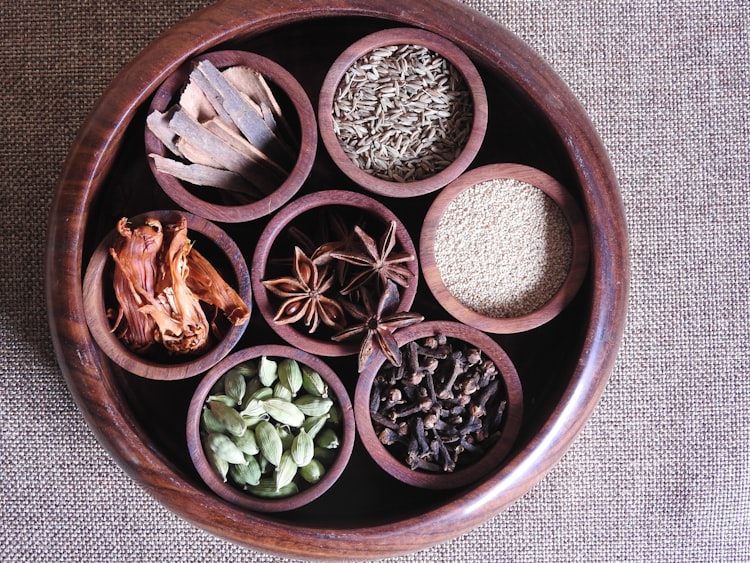Egyptian Gastronomy

Egyptian gastronomy is a rich and diverse culinary tradition that has been shaped by centuries of history and cultural exchange. Egyptian cuisine is heavily influenced by the country's geographical location, which has made it a melting pot of different cultures and flavors. Egpyt has been characterized by a revolving door of occupiers, and throughout that process has developed a unique and interesting blend of gastronomic culture. The foods in Egypt reflect the country's ancient and diverse cultural heritage, making it a fascinating and delicious cuisine to explore.
Culture and Geography
History
Egyptian food is the result of a rich culinary tradition shaped by various cultural influences throughout its history. Egypt has been occupied by multiple foreign powers throughout its history, starting with the invasion of the Hyksos in 1640 BCE. The Hyksos were eventually expelled, but they were only the beginning.
The Persian Empire conquered Egypt in 525 BCE and ruled until Alexander the Great's conquest in 332 BCE. After Alexander's death, Egypt was ruled by the Ptolemaic dynasty, a Greek dynasty that lasted until the Roman Empire annexed Egypt in 30 BCE. The Greeks and Romans introduced wine and olive oil, which have become an integral part of Egyptian cuisine.
Egypt remained under Roman rule until the 4th century CE when the Byzantine Empire conquered Egypt. The Muslim conquest of Egypt in 641 CE marked the beginning of Arab rule, which lasted until the Ottoman Empire conquered Egypt in 1517. Arab conquests brought new spices and techniques, including the use of rice, which has become a staple in many Egyptian dishes. The Ottoman Empire also left its mark on Egyptian cuisine, introducing dishes such as kofta, shawarma, and baklava.
The Ottoman Empire ruled Egypt for over 300 years until the British invaded Egypt in 1882, beginning a period of British occupation that lasted until 1952 when a military coup led by Gamal Abdel Nasser overthrew the monarchy and established the Republic of Egypt. This whirlwind history does not even cover the brief French occupation around the turn of the 19th century which brought new baking techniques and introduced pastries. Overall, Egypt has been occupied by foreign powers for over 3,000 years, with each occupation leaving its mark on the country's culture, architecture, and traditions.
In addition, Egyptian cuisine has been influenced by the country's religious and social practices. Islamic dietary laws have played a role in shaping the cuisine, with halal meat being a common feature in many dishes. Family gatherings and special occasions are celebrated with elaborate feasts, showcasing the country's culinary diversity. Egyptian cuisine is a fusion of different cultural and historical influences that have come together to create a unique culinary tradition.
1. Levantine cuisine: Lebanon, Syria, Jordan, and Palestine.
2. Persian cuisine: Iran and neighbors (Persian roots).
3. Turkish cuisine: Turkey (Ottoman roots).
4. Arabian Gulf cuisines: Khaleeji/Gulf cuisine + Saudi Arabia and Yemen.
5. North African cuisines: Morocco, Tunisia, Algeria, Libya, and Egypt.
[Note: Israeli cuisine is often included here as another category, or as a part of Levantine cuisine. Whether or not to include it is a highly controversial idea, one that I will leave up to the reader to investigate.]
Regions
Egypt's regional cuisine is heavily influenced by the country's geography and agriculture. The country is divided into five main regions: the Nile Valley, the Delta, the Western Desert, the Eastern Desert, and the Sinai Peninsula (Egypt can be divided up in lots of different ways, but these five regions are easiest for gastronomic purposes). Each region has its own unique culinary traditions, ingredients, and dishes.
The Nile Valley is known for its fertile land and agricultural practices, which produce a variety of crops such as wheat, beans, and vegetables. This region's cuisine features dishes such as ful medames, koshari, and stuffed pigeon, which are often served with fresh herbs and vegetables.
The Delta region is characterized by its coastal areas, which provide a rich variety of seafood. This region's cuisine includes dishes such as sayadeya, a fish dish cooked with rice, onions, and spices.
The Eastern and Western Desert regions are known for their Bedouin communities, who have developed a cuisine based on simple ingredients, such as lamb, goat, and camel meat, and traditional cooking techniques, such as baking in underground ovens.
Regions
Nile Valley (Upper Egypt)
Nile Delta (Lower Egypt)
Western Desert
Eastern Desert
Sinai Peninsula
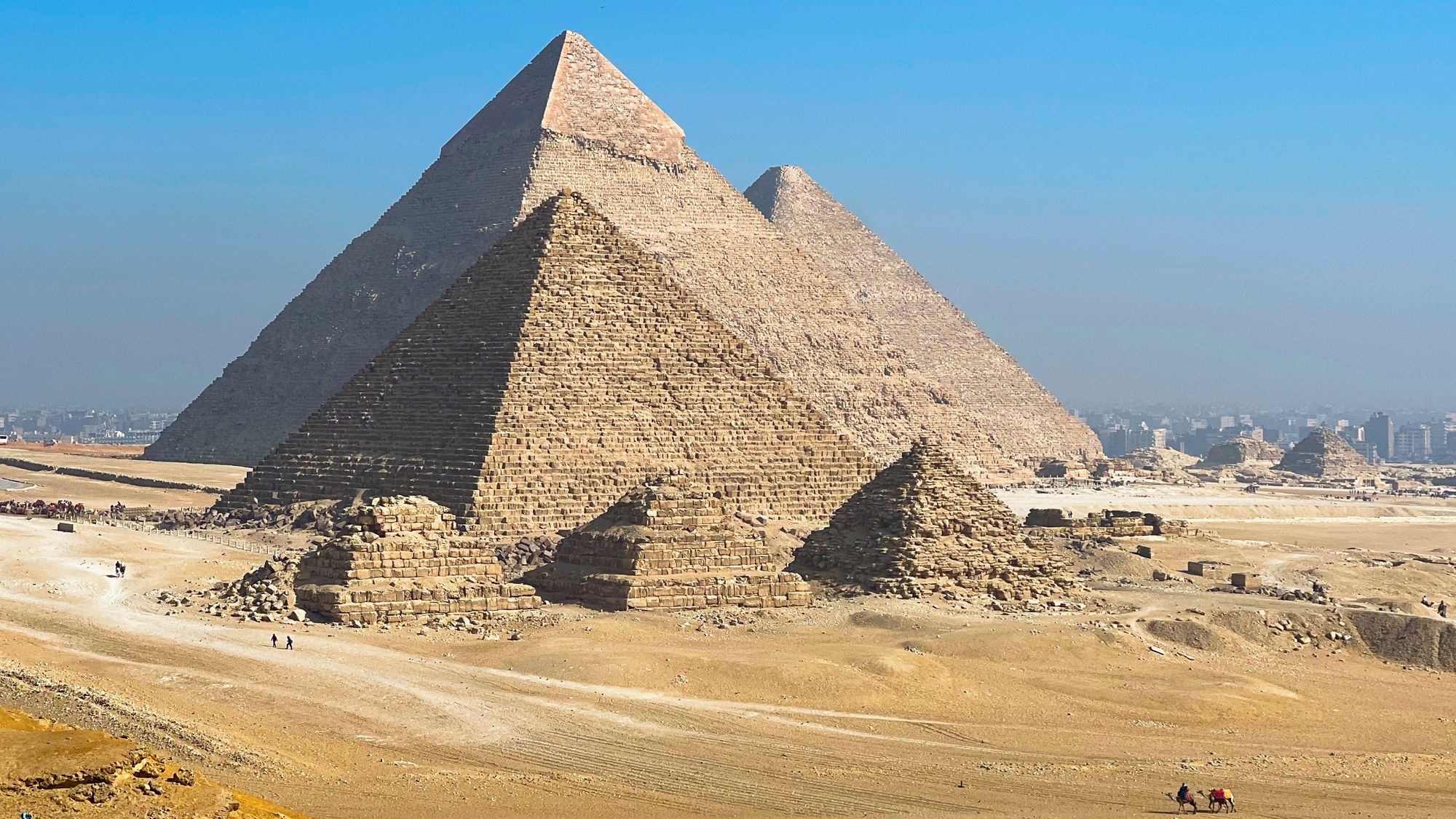
Ingredients
Fruits/Vegetables: Ingredients such as eggplant, tomatoes, onions, garlic, and cucumbers are frequently used. Leafy greens like spinach and molokhia (jute leaves) are also commonly used, either cooked into soups or stews or served as a side dish. Fruits like dates, figs, and pomegranates are also popular, often served as a sweet treat or used in savory dishes like tagines.
Meats/Fish: Lamb and beef are the most commonly used meats. Poultry, such as chicken and pigeon, are also popular. Fish is widely eaten in coastal areas, with dishes like sayadeya, a fish and rice dish, being a specialty.
Carbs: Bread is a crucial component of Egyptian cuisine, being a staple food in most meals. Traditional bread varieties include pita, baladi bread, and feteer meshaltet, a layered pastry. Rice and pasta are also commonly used, with dishes like koshari (a mix of lentils, rice, and pasta) and macaroni béchamel (baked macaroni with a creamy white sauce) being popular.
Herbs/Spices: Cumin, coriander, and garlic are the most commonly used. Other popular spices include cinnamon, nutmeg, and allspice. Fresh herbs like parsley, dill, and mint are also used in many dishes.
Condiments/Sauces: Tahini (a paste made from ground sesame seeds), dukkah (an Egyptian spice blend), and harissa (a Tunisian spicy paste made from chilies) are the most popular. Tomato-based sauces are also common, with dishes like molokhia and stuffed vegetables often served with a tomato-based sauce.
Major Ingredients
Molokhia (jute leaves)
Tomatoes
Pigeon
Breads
Dukkah
Harissa
International Highlights
Molokhia (Mulukhiyah)
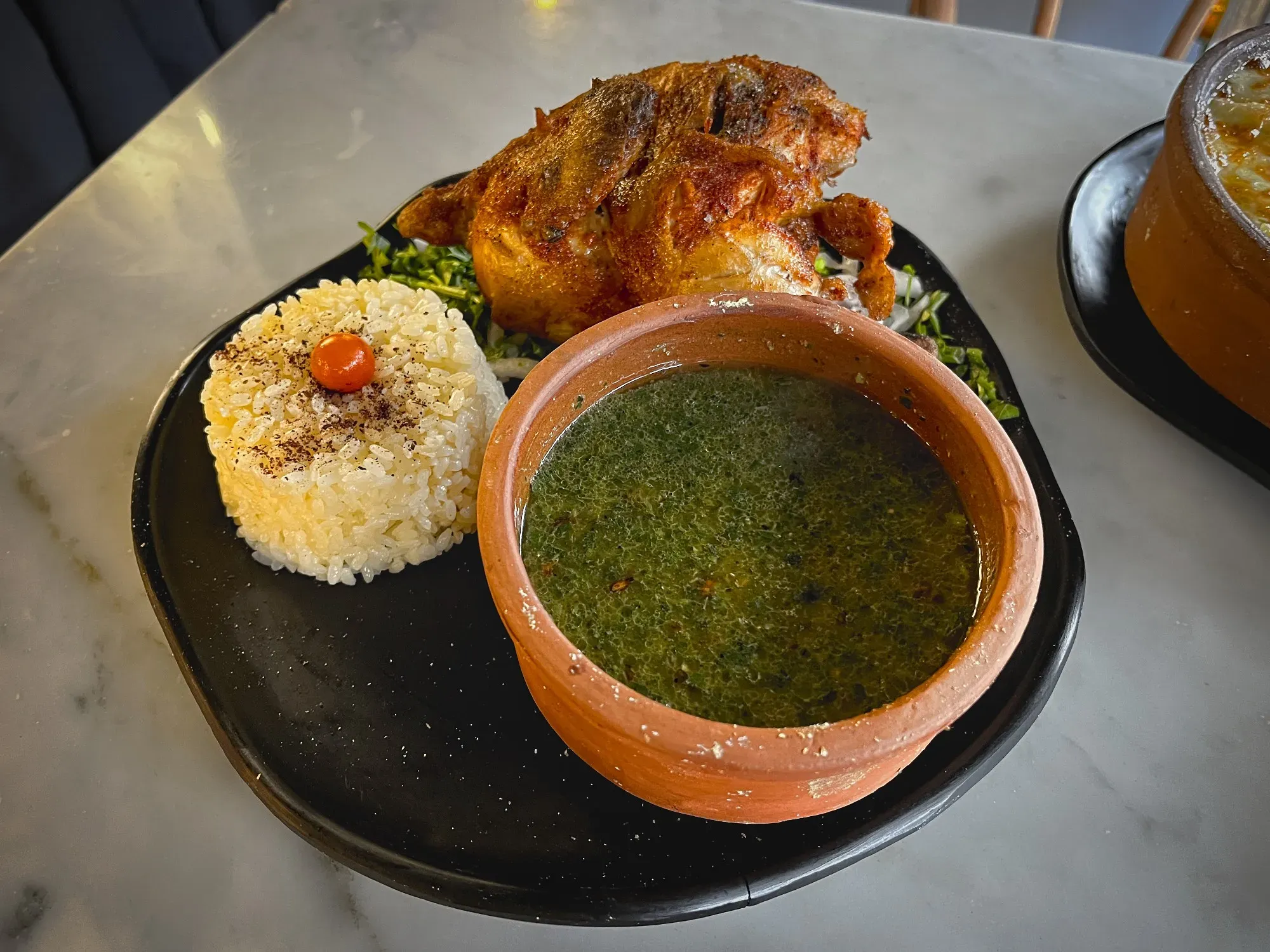
Molokhia, also known as jute leaves, is a popular vegetable that is widely used in Egyptian cuisine. The leaves are known for their slimy texture and earthy flavor and can be cooked in a stew bearing the same name as the vegetable. The stew is typically served with rice or bread and is a beloved comfort food for many Egyptians. Molokhia is a nutritious vegetable that is rich in vitamins and minerals and is believed to have many health benefits.
Koshari
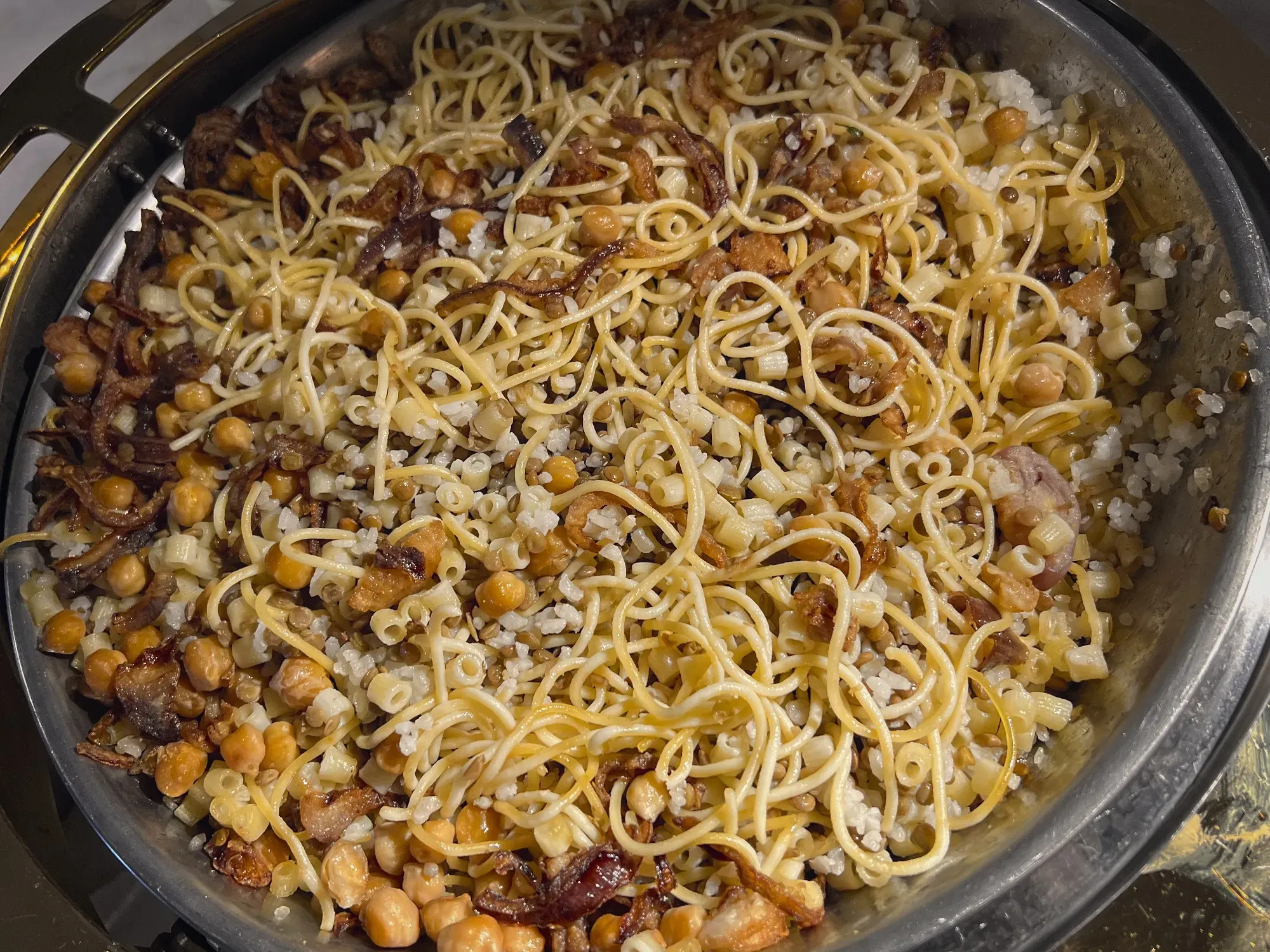
Koshari is a popular Egyptian street food that is made from a mix of rice, lentils, and pasta, topped with spicy tomato sauce, crispy fried onions, and chickpeas. It is a hearty and filling dish that is loved by many Egyptians, and it is often considered the national dish of Egypt. Koshari is typically served hot and is a popular option for lunch or dinner. It is a vegetarian dish, which makes it a great option for people who follow a plant-based diet.
Ta'ameya (Falafel)

Ta'ameya, also known as falafel throughout the world, is a popular Egyptian street food that is made from fava beans that have been ground into a paste with herbs and spices. The paste is then shaped into small balls or patties and deep-fried until crispy and golden brown. Ta'ameya is typically served in a pita sandwich with pickles, fried eggplants, minty yogurt sauces, hummus, or tahini dips. It is a flavorful and satisfying vegetarian option that is loved by many Egyptians and has become popular in other parts of the world as well.
Fatteh (Fattah)
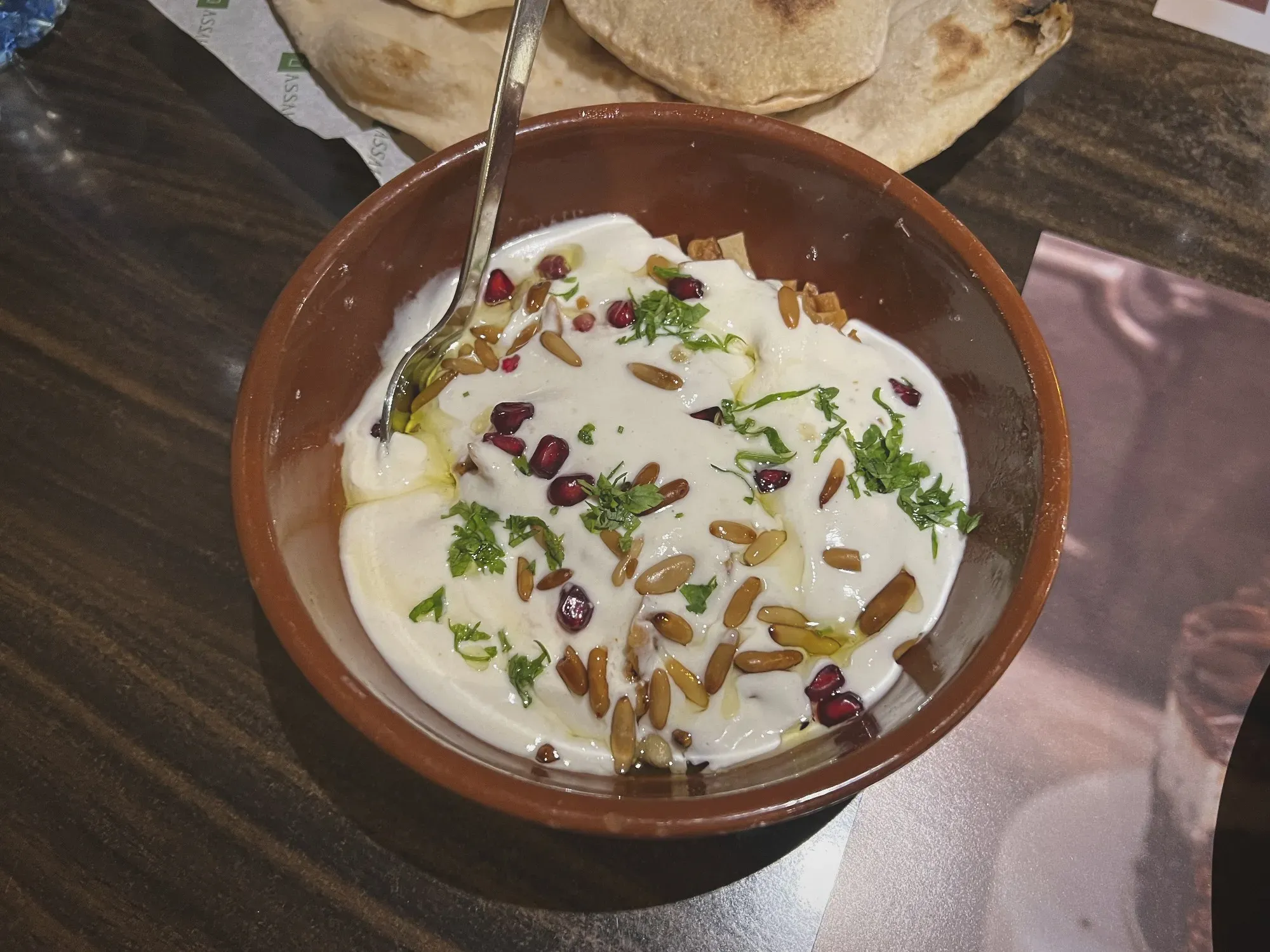
Fatteh (Fattah) is a popular Egyptian/Levantine dish that is typically served on special occasions. It is a layered dish that is made from a base of crispy Egyptian bread or pita, which is then topped with layers of rice, spiced meat, and a flavorful tomato sauce. The tomato sauce is Egyptian specific, while Fatteh from the Levant uses a strained yogurt sauce (the picture above shows the Levant style). The dish is often garnished with nuts, such as almonds or pine nuts, and is served hot. Fatteh is a hearty and filling dish that is loved by many Egyptians, and it is often considered a symbol of hospitality and generosity. Both Egyptians and people in the Levant seem to have equal rights to claim Fatteh, and so for the purpose of these guides, it will be included in both overviews.
Ful Medames
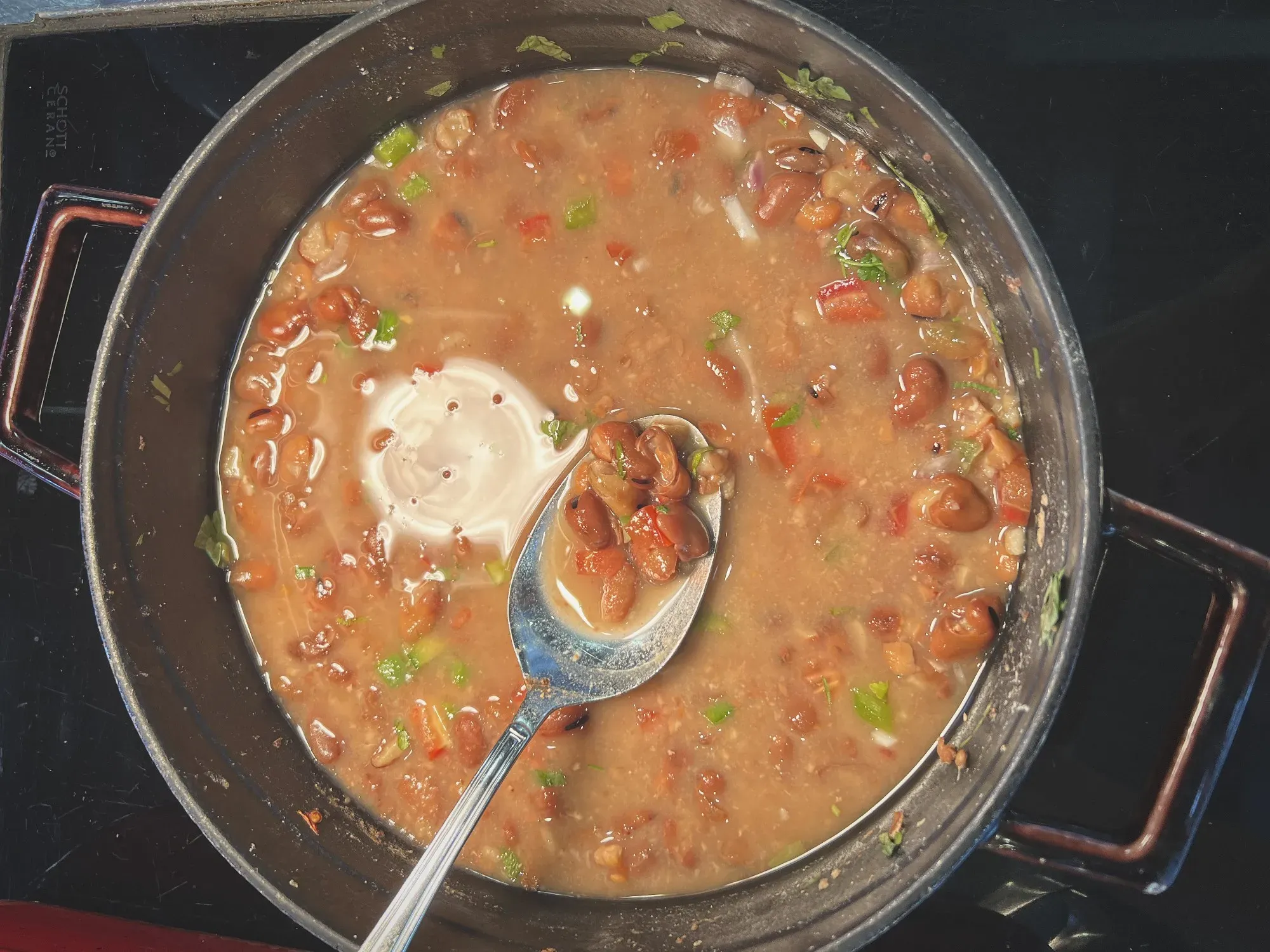
Ful medames is a traditional Egyptian breakfast dish that is made from fava beans. The beans are cooked slowly in a pot with water and spices until they are tender and flavorful. The dish is typically served hot with a variety of toppings, such as chopped tomatoes, parsley, and onion, along with a drizzle of olive oil and a squeeze of lemon juice. It is often eaten with Ta'ameya. Ful medames is a nutritious and filling dish that has been a staple of Egyptian cuisine for centuries, as well as a popular breakfast dish throughout the Middle East and North Africa.
Umm Ali
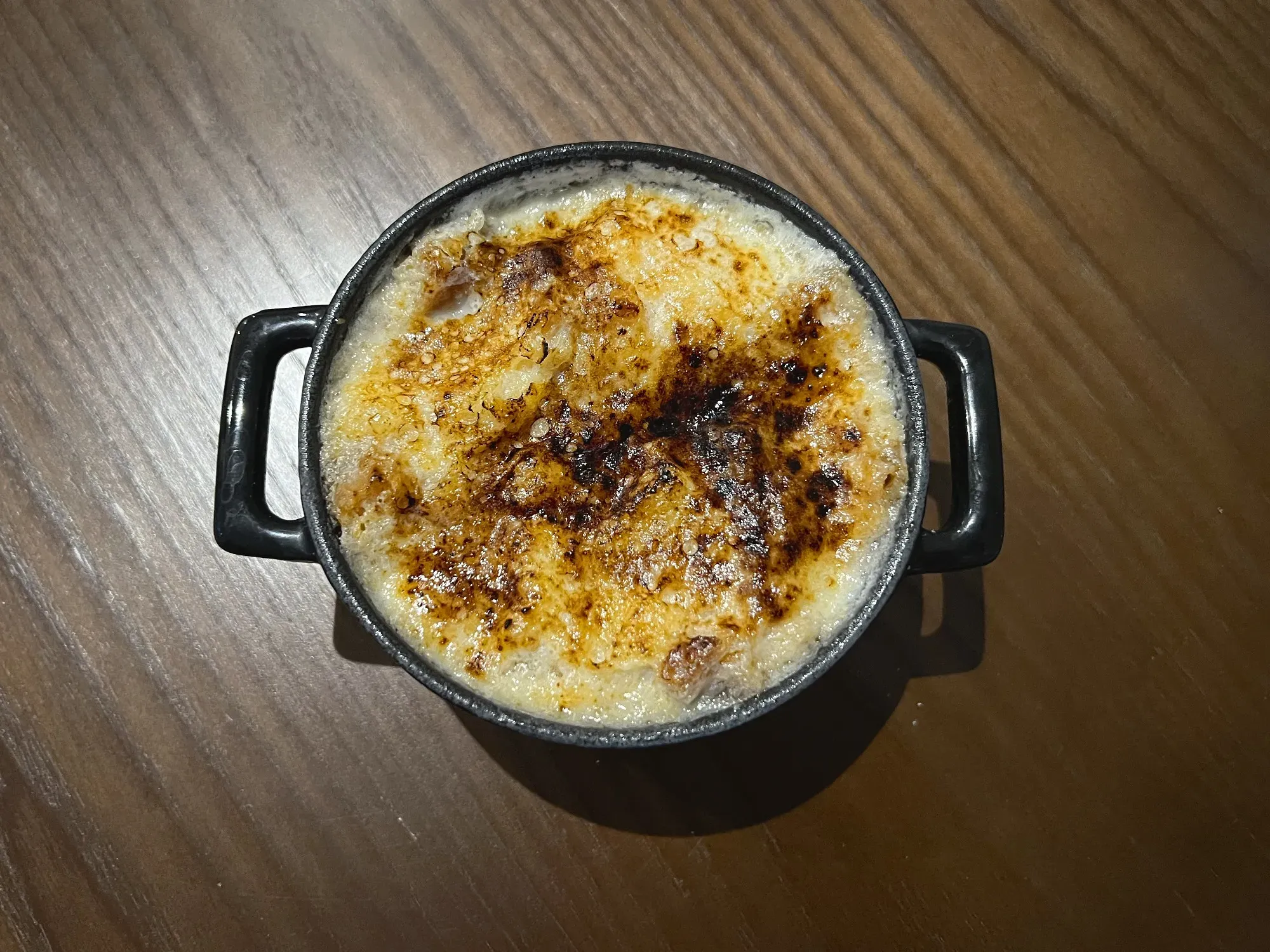
Umm Ali is a traditional Egyptian dessert that has been enjoyed for centuries. The dessert's name, Umm Ali, means "Ali's mother," and according to legend, it was named after a noblewoman who was the first to make and serve the dessert.
To make Umm Ali, layers of puff pastry are placed in a baking dish and soaked in a mixture of milk and cream. The dish is then topped with a layer of nuts and raisins before being baked until golden brown. Once out of the oven, the dessert is typically sprinkled with powdered sugar and cinnamon, and served warm.
Kahk / Ma'amoul
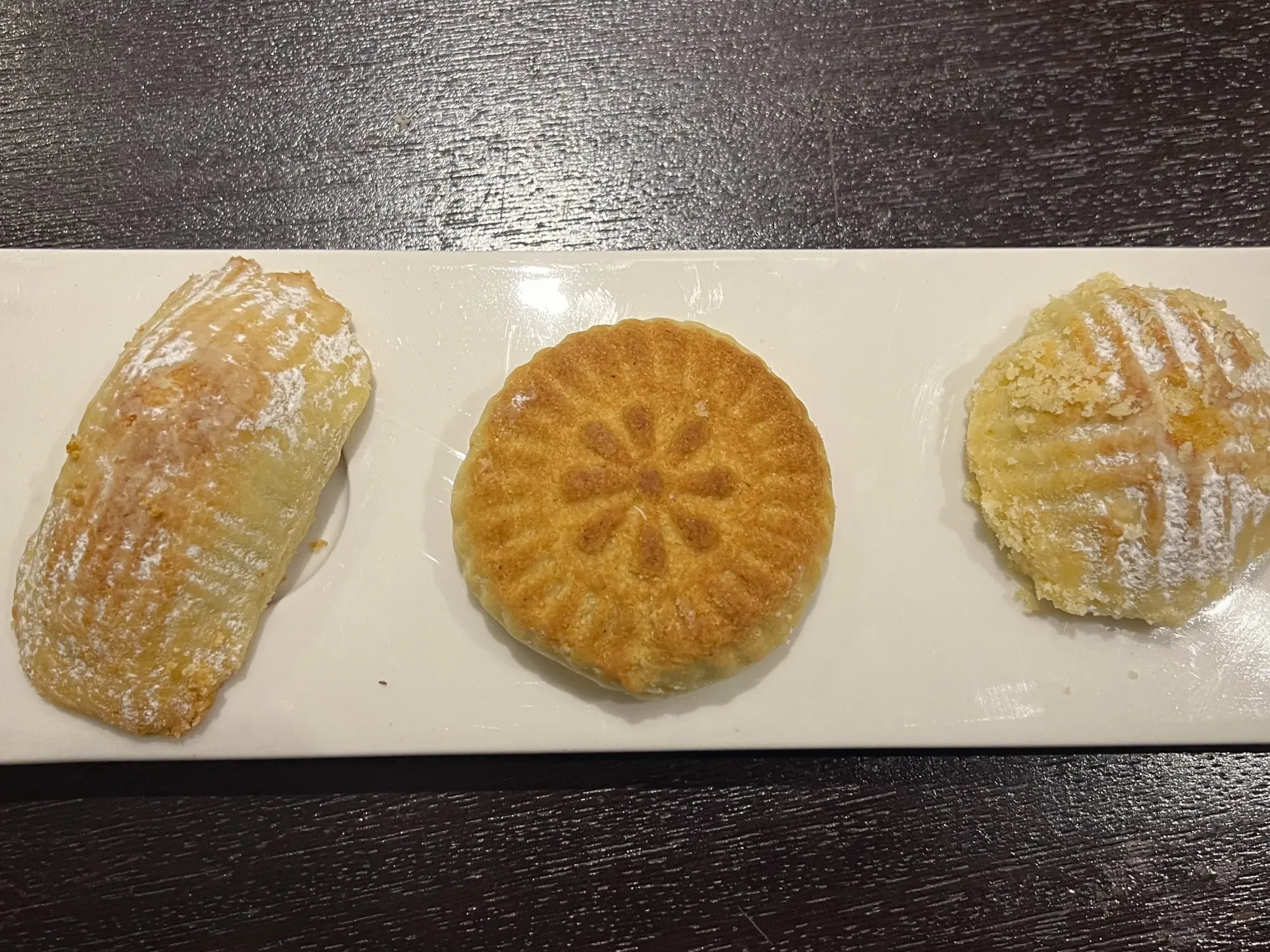
Kahk is a shortbread cookie made from a mixture of flour, sugar, and ghee or butter. The dough is typically flavored with spices such as cardamom and cinnamon and is often filled with a sweet paste made from dates or nuts. Kahk is often shaped into small rounds or ovals and is decorated with sesame seeds or powdered sugar. It has a crumbly texture and a sweet, buttery flavor. Kahk has been a staple of Egyptian cuisine for centuries and is believed to have originated in ancient Egypt.
Ma'amoul is the name for the Levantine shortbread cookie that derives from Kahk. The difference between the two is mostly just the naming, that Ma'amoul are always filled, and that Ma'amoul are usually made with decorative molds.
Regional-Specific Shoutouts
Kebda Eskandarani
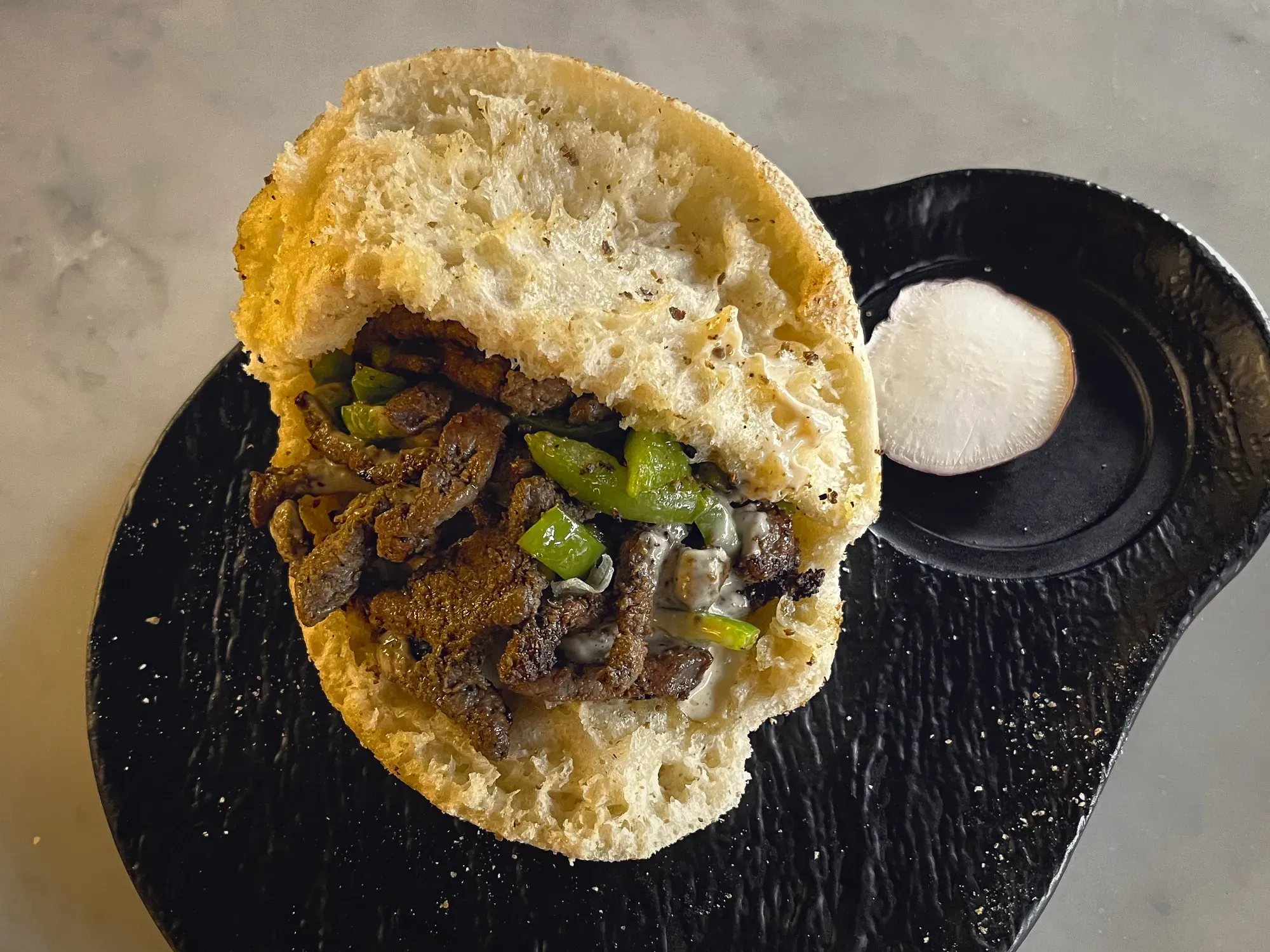
Kebda Eskandarani, also known as Alexandrian liver or just Kibda, is a popular Egyptian street food made from beef liver. The dish originated in Alexandria, a coastal city in northern Egypt, and has become a beloved part of the country's culinary heritage.
To prepare Kebda Eskandarani, the liver is first sliced into thin strips and then sautéed in a hot skillet with garlic, chili peppers, and a blend of spices such as cumin, coriander, and paprika. The dish is typically served with rice or bread and garnished with fresh parsley or cilantro.
Mashi (Mahshy)
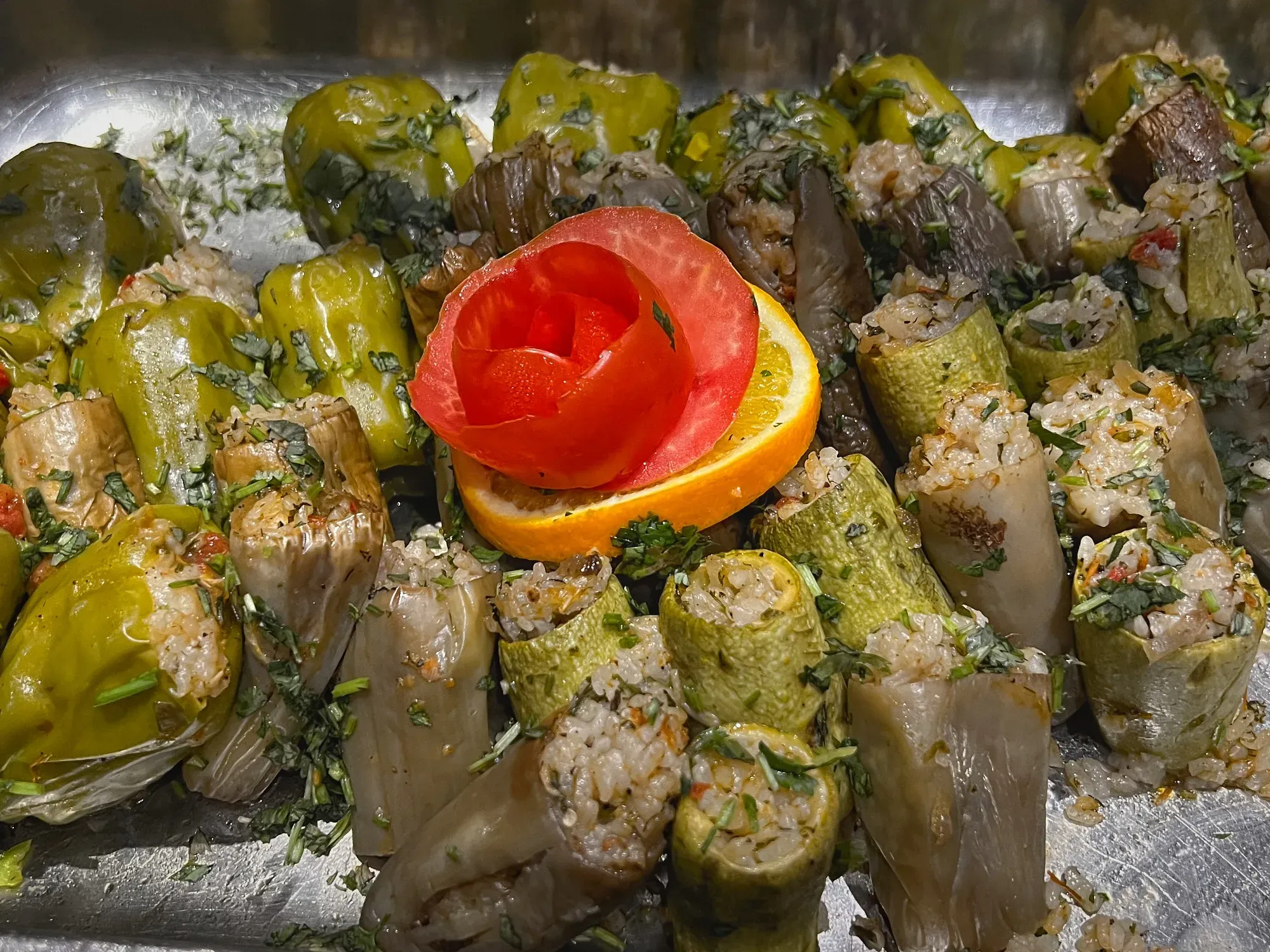
Mashi, also known as Mahshy, is a popular Egyptian dish made from vegetables stuffed with a spiced rice mixture. To prepare Mashi, the vegetables are first hollowed out and then stuffed with a mixture of rice, onions, garlic, and a blend of spices such as cumin, coriander, and paprika. The stuffed vegetables are then usually cooked in a tomato-based sauce until they are tender and flavorful. The dish is often served with a side of bread and is a favorite among Egyptians.
Makarona Beshamel
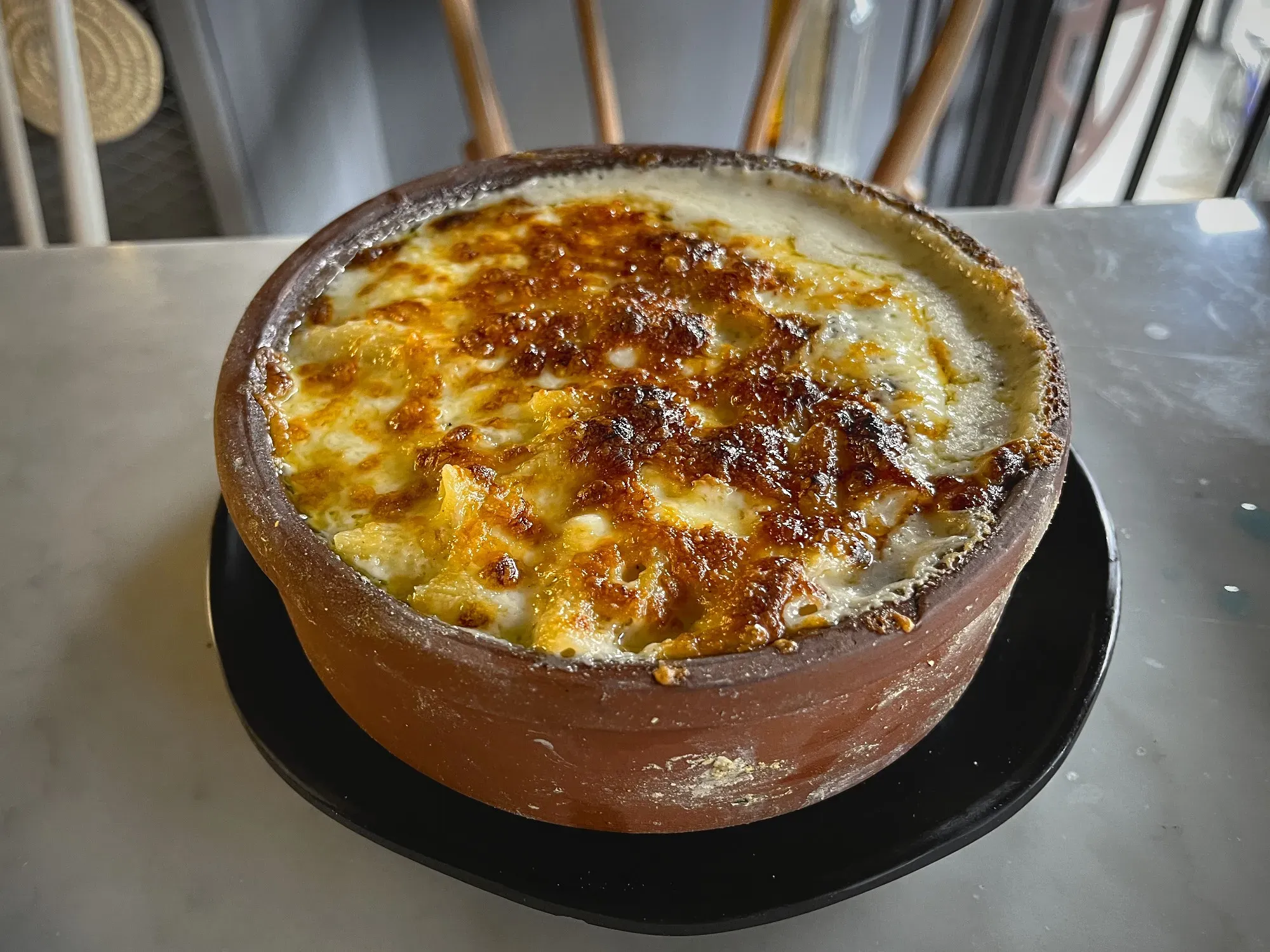
Makarona Beshamel, also known as Macaroni Bechamel, is a popular Egyptian dish that consists of cooked macaroni pasta layered with a creamy béchamel sauce and ground beef filling. To prepare Makarona Beshamel, the pasta is first cooked and then layered with a spiced ground beef filling. A creamy béchamel sauce made from butter, flour, and milk is then poured over the layers and topped with a layer of grated cheese. The dish is then baked until the cheese is melted and bubbly. Makarona Beshamel is a comforting and indulgent dish that is loved by many Egyptians.
Haman Mashi (Stuffed Pigeon)
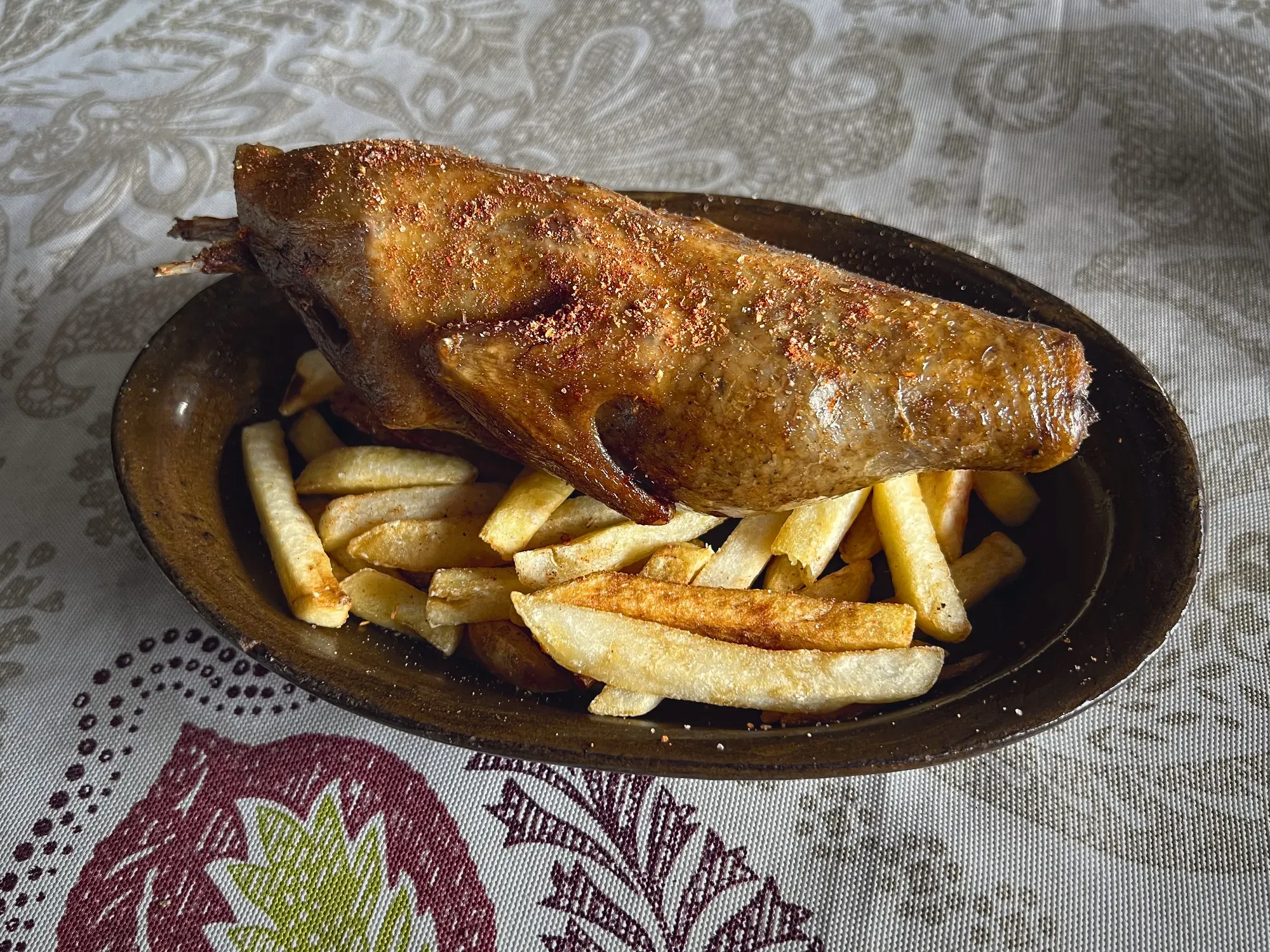
Haman Mashi, also known as Stuffed Pigeon, is a traditional Egyptian dish that consists of a whole pigeon stuffed with a spiced rice mixture and then cooked until tender and flavorful. The dish is typically served with a side of bread or rice.
Samak Mashwi
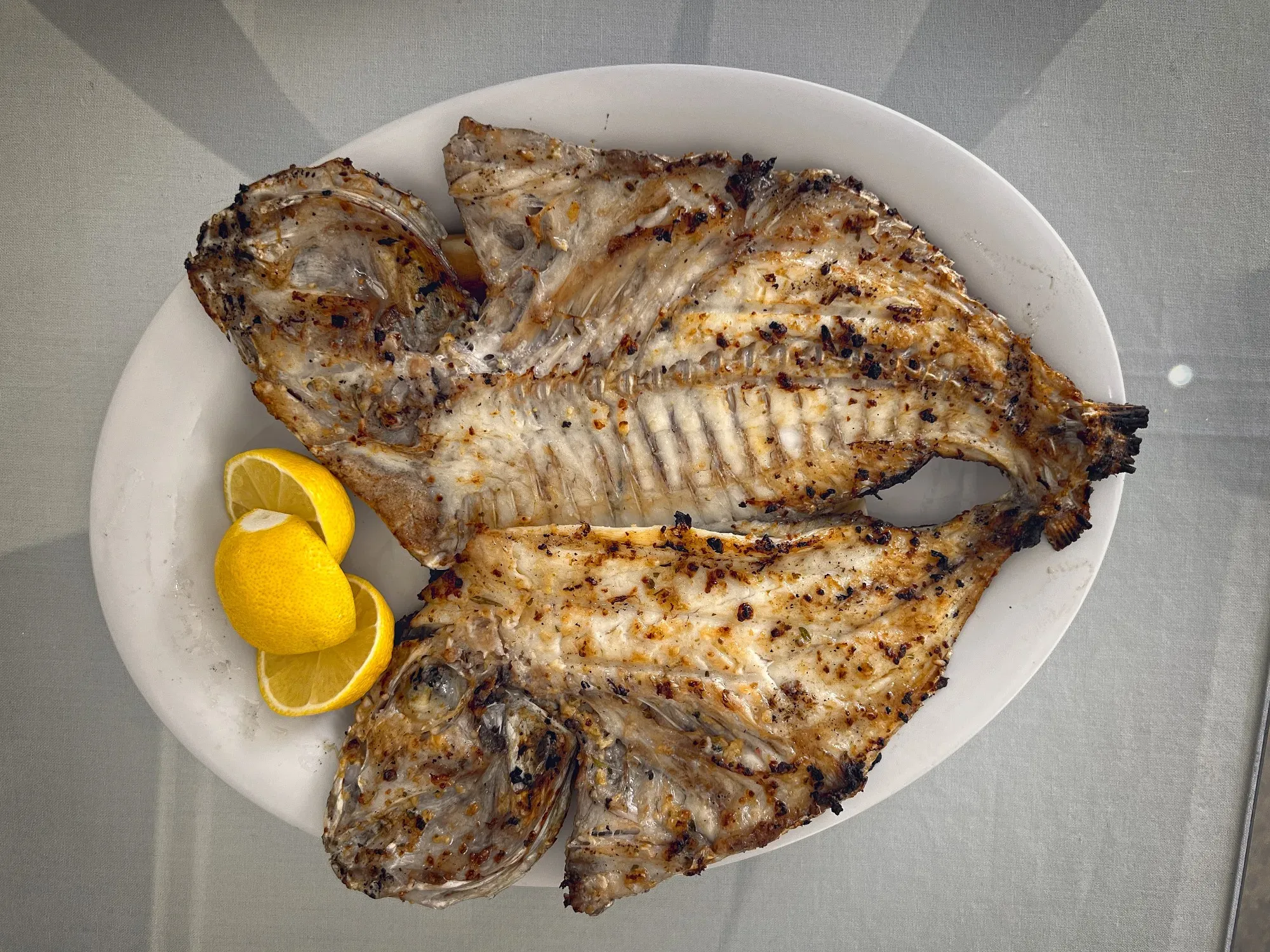
Samak Mashwi is a traditional Egyptian dish that translates to "grilled fish". It is a popular dish that is often enjoyed during the summer months when fish are plentiful. The dish is typically made using fresh fish, which is marinated in a mixture of spices, lemon juice, and garlic before being grilled over an open flame. The result is a flavorful and tender fish that is perfect for a summer meal. Samak Mashwi is often served with a side of rice, salad, and lemon wedges. It is a dish that is enjoyed by people throughout the Middle East and is a staple of Egyptian cuisine.
Kawaree
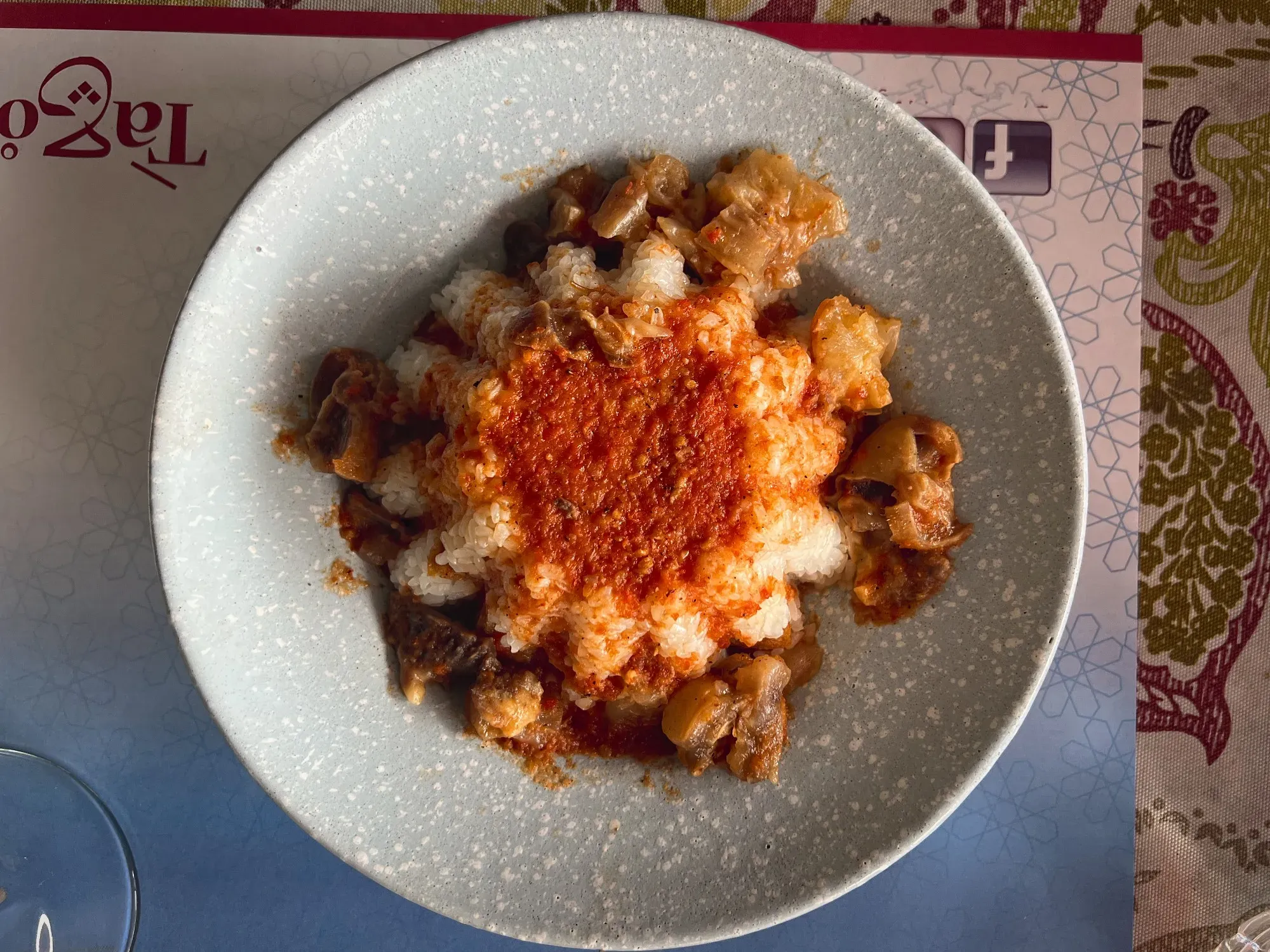
Kawaree, also known as Cow Feet Soup, is a traditional Egyptian dish that consists of cow feet simmered in a flavorful broth until the meat becomes tender and the broth is rich and gelatinous. The dish is typically spiced with cumin, coriander, garlic, and other aromatic herbs.
To prepare Kawaree, the cow feet are first cleaned and then simmered in water with vegetables and spices until the meat is tender and the broth is rich and flavorful. The dish is typically served with a side of bread or on a bed of rice and is popular among Egyptians during the colder months.
Besarah
Besarah is a traditional Egyptian dish that consists of a creamy and thick soup made with fava beans and various aromatic herbs and spices. To prepare Besarah, the fava beans are first soaked overnight, then boiled and mashed to create a creamy base. The soup is then flavored with a blend of spices such as cumin, coriander, garlic, and other herbs like parsley and dill. The soup is typically served with a side of bread and is enjoyed as a hearty and nourishing meal.
Aish Baladi
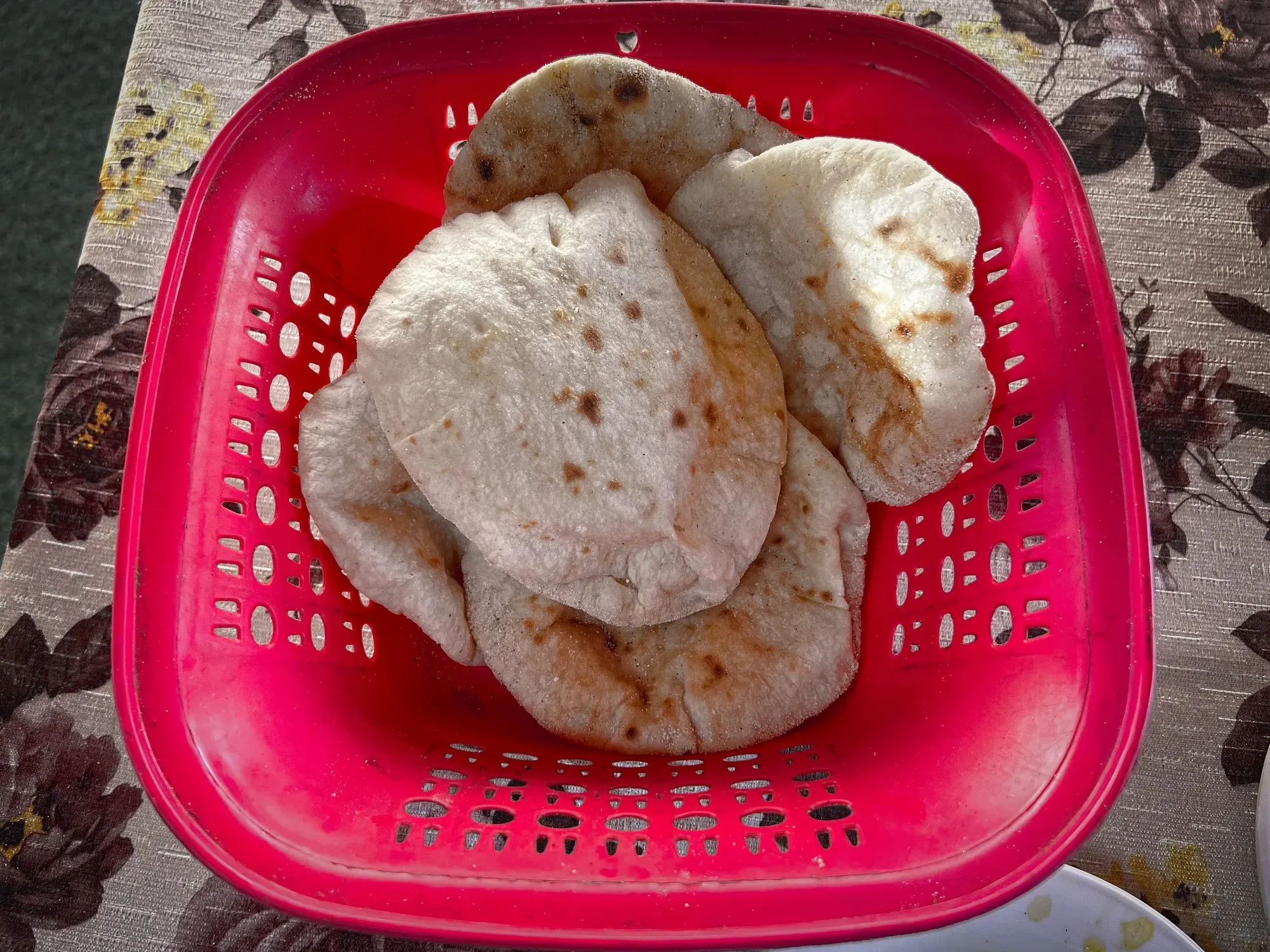
Aish Baladi is a traditional Egyptian flatbread that is a staple in Egyptian cuisine. It is made from simple ingredients, including flour, water, salt, and yeast, and is baked in a hot oven or on a griddle.
The bread has a crispy crust and a soft and chewy interior, making it the perfect accompaniment to many traditional Egyptian dishes. Aish Baladi is often used to scoop up sauces, dips, and stews, and is also enjoyed on its own.
Aish Baladi translates to "bread of the country" and is a symbol of Egypt's culinary heritage. The bread has been a part of Egyptian cuisine for centuries and is still a beloved part of the country's culinary traditions.
Feteer Meshaltet
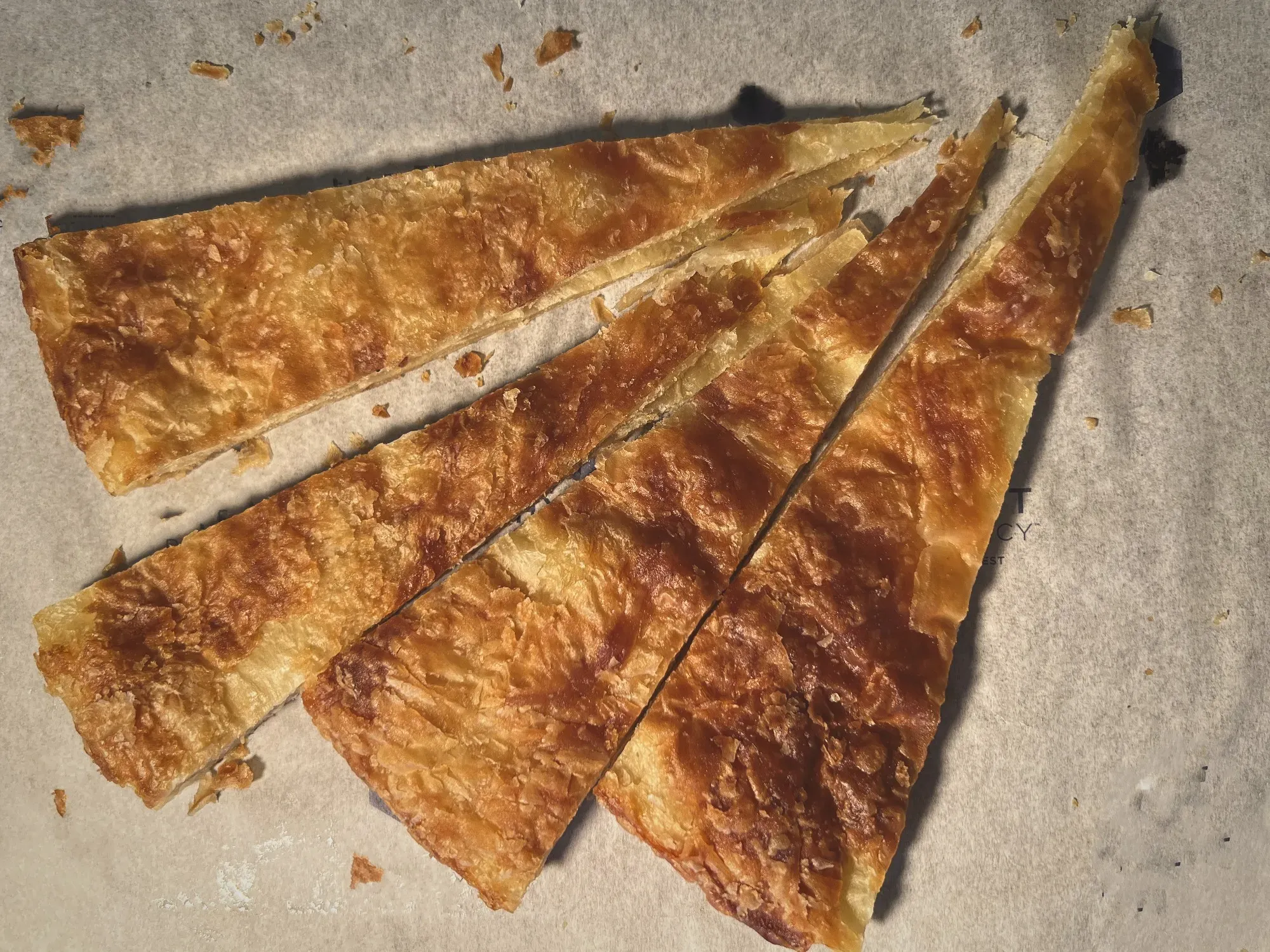
Feteer Meshaltet is a traditional Egyptian pastry that is made by layering thin sheets of dough and then baking them until they are crispy and golden. The dough is typically made from flour, water, yeast, and salt, and is kneaded until it is smooth and elastic. After being rolled out into thin sheets, the dough is brushed with a mixture of butter and oil, then folded into layers and baked in a hot oven. Feteer Meshaltet can be served as a savory dish, filled with cheese, meats, or vegetables, or as a sweet treat, filled with honey, sugar, or nuts.
Hawawshi
Hawawshi is a traditional Egyptian dish made with a spicy minced meat filling that is sandwiched between two layers of dough and then baked in the oven. The dough is usually made from a mixture of flour, water, yeast, and salt, and is left to rise before being rolled out into thin sheets. The meat filling is typically made from ground beef or lamb that is mixed with chopped onions, parsley, and a variety of spices such as cumin, paprika, and coriander. The filled dough is then baked until it is crispy and golden brown. Hawawshi is a popular street food in Egypt and is often served with tahini sauce, pickles, and hot sauce.
Laban
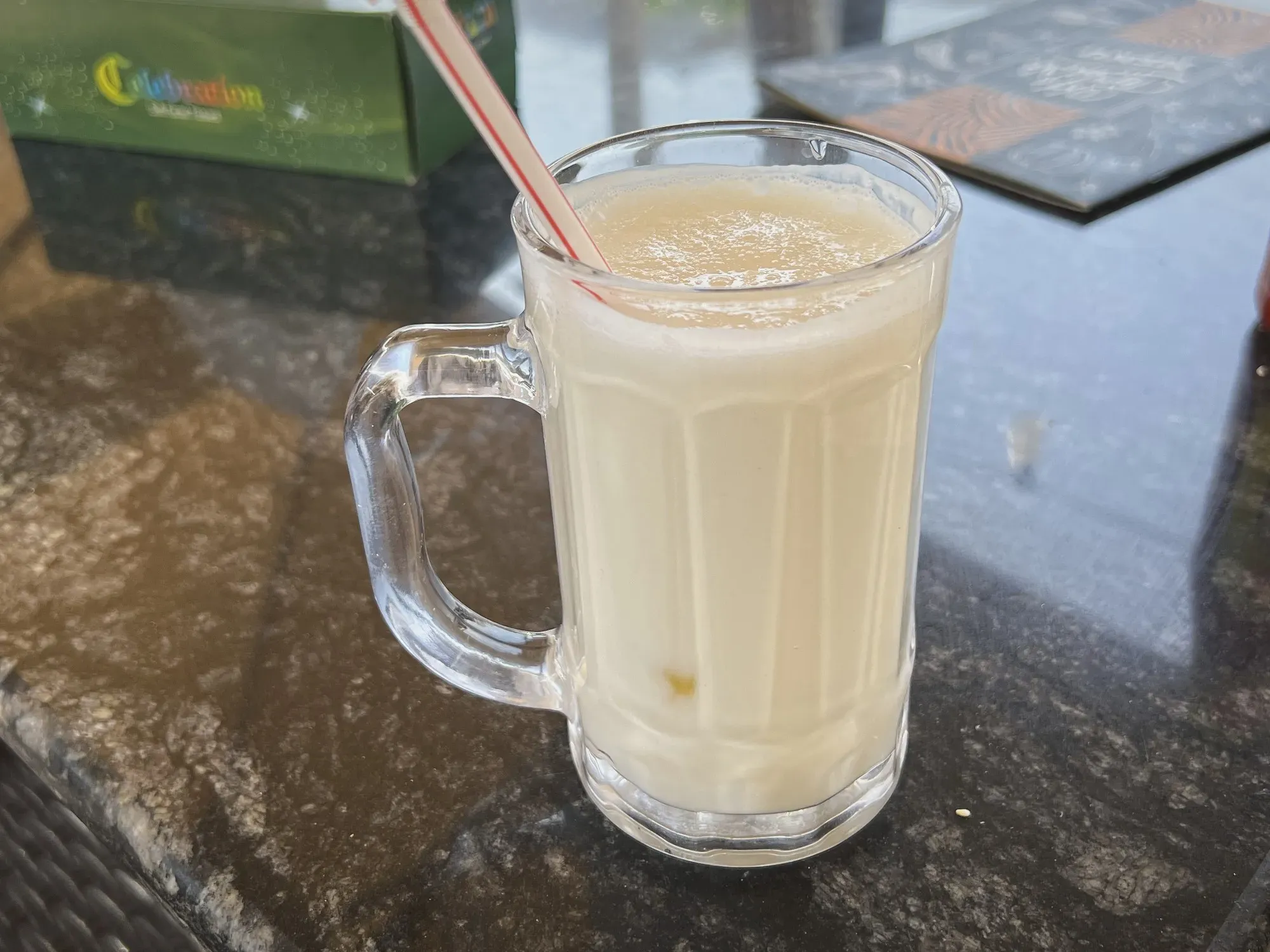
Laban, also known as leben, is a traditional dairy product that has been consumed in many Middle Eastern and North African countries for centuries. The origin of laban is not known for certain, but it is believed to have been first made by nomadic tribes who used animal milk to produce a sour, fermented product that could be stored for longer periods of time without spoiling.
Over time, laban became a staple food in many parts of the Middle East, including Egypt and the Levant, where it is still widely consumed today. It is often used as a base for dips and sauces, as well as in traditional dishes such as laban immo, a yogurt and eggplant dish popular in Egypt, and labneh, a strained yogurt cheese that is a staple in the Levant. Laban is also used as a refreshing drink, an example being Laban rayeb in Egypt, and is often flavored with herbs and spices such as mint and cumin.
Basbousa
Basbousa is a sweet Egyptian cake that is made from semolina, sugar, and coconut. The semolina is mixed with sugar, baking powder, and yogurt or milk to create a thick batter, which is then poured into a baking dish and baked until golden brown. Once cooked, the cake is drenched in a sweet syrup made from sugar, water, and lemon juice, which gives it a moist and syrupy texture. It is also known by other names such as revani in other parts of the Middle East and Mediterranean.
List of Other Things to Try:
- Domiati: a white soft cheese that is popular in Egypt, and made from cow's milk.
- Areesh: a type of salted cheese that is made from a mixture of cow and buffalo milk.
- Rumi: a hard, salty cheese that is similar to Romano cheese.
- Mish: a traditional Egyptian cheese that is made by fermenting salty cheese for several months or years.
- Eish Fine: an Egyptian baguette that is crusty on the outside and soft on the inside.
- Eish Shamsi: an Egyptian sourdough bread that is made with 100% whole wheat flour and has a distinct tangy flavor.
- Mombar (Fawaregh): a traditional sausage made from sheep or cow intestines that are stuffed with a mixture of rice, spices, and meat.
- Tarb: a type of kofta that is wrapped in lamb fat before cooking, which gives it a rich and juicy flavor.
- Feseekh: a type of fermented and salted gray mullet that is considered a delicacy in Egypt, typically eaten during the spring Sham el-Nessim holiday.
- Keshk: a traditional Egyptian food that is made from a mixture of fermented milk and cracked wheat, often used as a topping for flatbread or mixed into soups.
- Akawi: a type of semi-hard cheese that is made from cow or sheep's milk and is often used in traditional Egyptian dishes such as koshari and feteer.
- Kaak al-Eid: a type of sweet bread that is often eaten during Eid al-Fitr celebrations at the end of Ramadan.
- Halabesa: a traditional Egyptian dish made from chickpeas, onions, and spices that are blended into a smooth puree and then fried.
- Qatayef: a popular Egyptian/Levantine dessert made of small pancakes filled with either cream, cheese, or nuts, then fried or baked and served with syrup.
- Ghorayeba: a type of Egyptian shortbread cookie that is made from butter, flour, sugar, and vanilla.
- Meshabek: a traditional Egyptian funnel cake that is made by piping dough into hot oil in a circular pattern, then deep-fried and dusted with powdered sugar.
- Roz Bel Laban: a sweet Egyptian dessert made from rice pudding and topped with a creamy layer of milk.
- Mahalbeyya: a sweet pudding-like dessert made from milk, sugar, and rice flour, often flavored with rose water or orange blossom water.
Resources
Restaurant Recommendations
In Cairo, our favorite restaurant was the Tabali Bistro. This bistro served up a ton of true Egyptian classics in a delicious, quality fashion. It was packed with locals and travelers who had heard positive reviews, reviews to which we would like to add more positivity to.
Al-Sahaby Lane Restaurant is an alley-way and rooftop restaurant in Luxor that has an absolutely incredible view across the Nile over the Valley of the Kings area. The food is decent, and the atmosphere is otherwordly. If you can get a table on the rooftop, this place is an absolute gem.
To see an extensive list of restaurant recommendations in Egypt, check out the Restaurants page to see a map of our top recommendations for Africa as well as the database with details on restaurants from all around the world.






